Wahoo has today released the next step in their GPS bike computer range, the Elemnt Roam.
Our Rob Lockhart was at the launch:
Wahoo introduced its first bike computer three years ago and over this time has expanded the product range and attracted an increased user base in a market that has been largely dominated by Garmin.
The Elemnt Roam, released today, is a fully featured bike computer that will now sit at the top of Wahoo’s product range. As you’d expect it will display whatever data you decide you want it to show on its relatively large and clear screen and records where you’ve been and all the available metrics of how you did it.
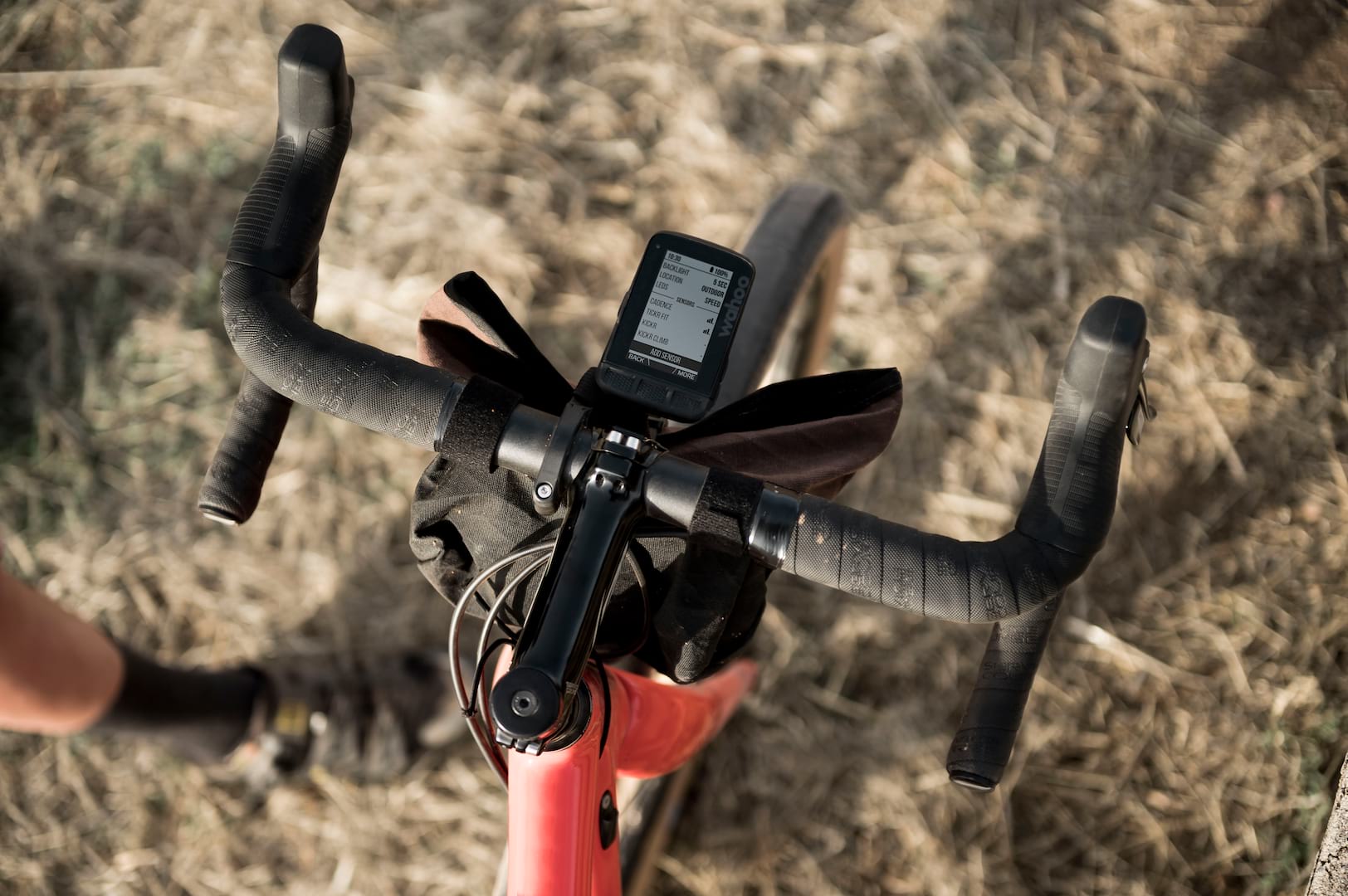
The Features
The new features and improvements of the Roam over previous Wahoo computers are
- 2.7 inch colour screen,
- ambient light sensor to automatically adjust the screen’s brightness,
- an increased battery life quoted at 17hrs,
- navigation features such as ‘route to start’ which will take you back via the quickest route available based on your preferences,
- automatic rerouting to get back on track of a pre-planned course, which Wahoo claims is more intelligent than their competitors’.
It features ‘Smart Navigation’ using Open Street Maps (OSM). Giving you access to mapping of the whole world at no additional cost. You can select a destination and allow the unit to navigate you there or you can load up a pre planned route. It provides turn by turn navigation and it syncs with online route planning services Ride With GPS and Komoot, from where you can download routes to the device. The routes are marked on the map with Wahoo’s chevron shaped breadcrumbs which clearly indicate the route on the map and the direction you should be travelling along the route – those who have used one of Wahoo’s previous models will be familiar with the style and graphics.
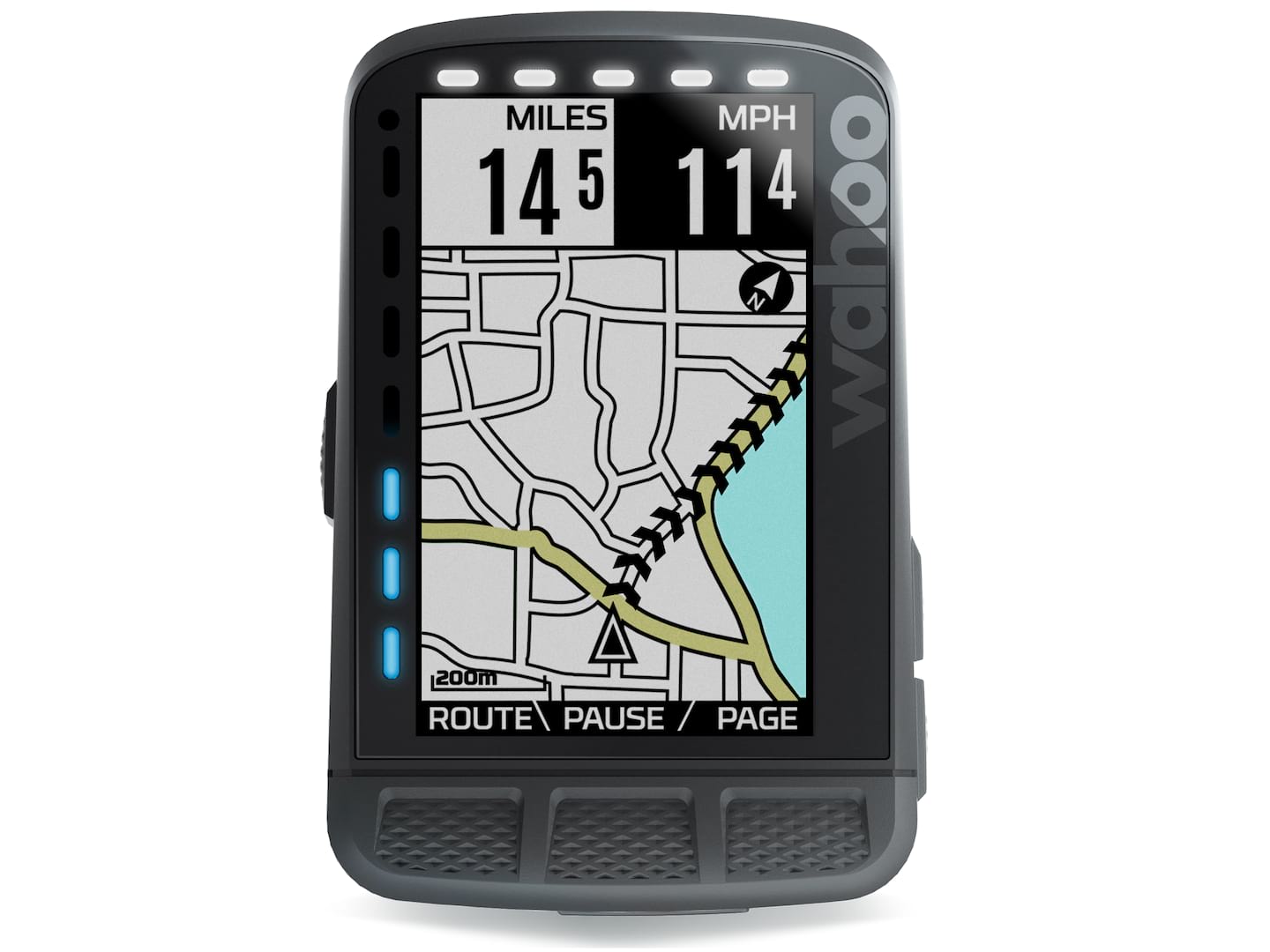
There is Live Tracking that allows you to share your location with friends and family and also on screen call, SMS text messages and email notifications so you can see whether it’s worth getting your phone out of your pocket or bag for that inevitable call from your boss whilst you’re ‘working from home’! There is Strava Live Segments integration so you can be alerted when a segment begins, display the progress of your effort towards your goal and give you some encouragement when you are close to hitting a PR or taking that KOM from your mate. There is also integration with online training apps Training Peaks and Today’s Plan so that you can download your structured workouts and perform them indoors on the turbo trainer or out on the road or trail. These take advantage of the new colour display using the colours to clearly identify your intervals. The Roam will also pair with and control Wahoo’s indoor trainers such as the Kickr and Kickr Snap.
It’s also completely wireless with Wi-Fi, Bluetooth and Ant+ allowing it to connect with your phone, upload your rides, download workouts and routes, pair with power meters, heart rate monitors, electronic shifting systems, and sensors such as speed and cadence.
First Impressions
At Wahoo’s launch event we got to see their promotional video for the Roam, which was all about riding gravel bikes and getting off the roads and onto the trails harnessing the new navigational abilities. In the short ‘hands on’ time I had with a unit I wasn’t able to test these claimed abilities (Ed – Rob was sadly immobilised by a broken collar bone acquired just before the launch, heal fast!) so we’ll look forward to getting a Roam out on a long term test soon.
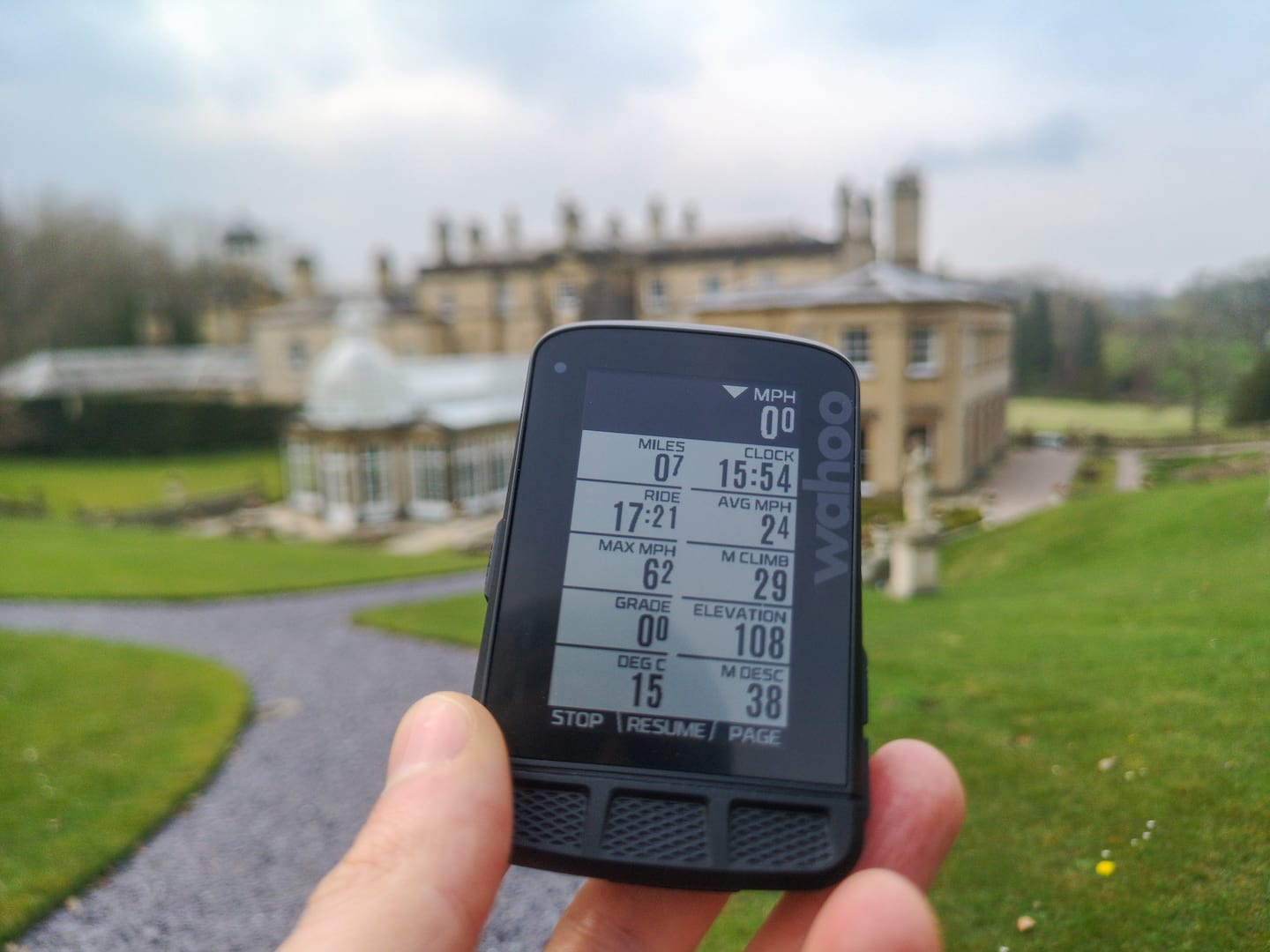
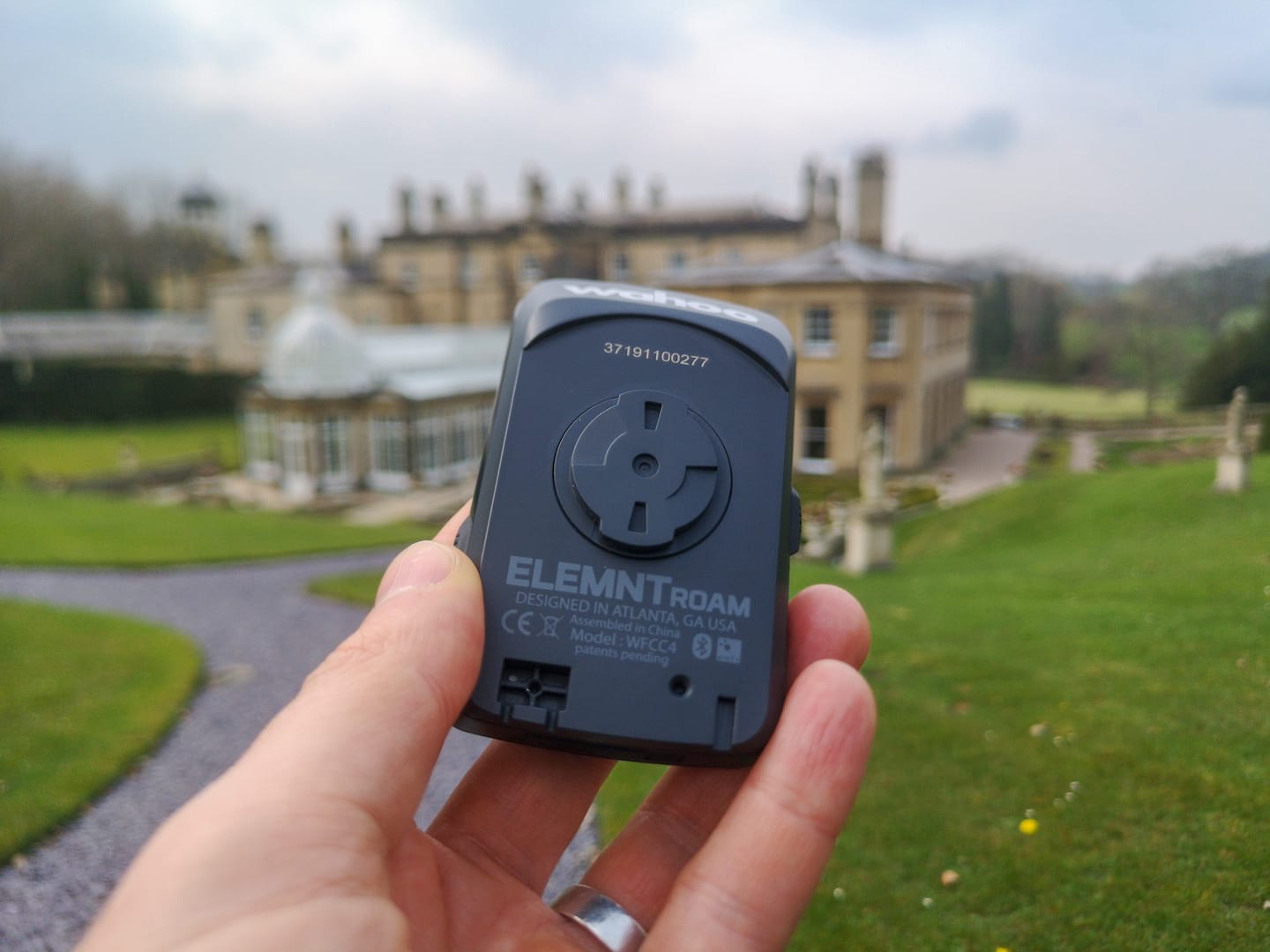
If any of you are familiar with Wahoo’s range from over the last three years you will instantly be thinking it looks like an Elemnt sized Bolt. You wouldn’t be wrong, the design language of the Bolt with its large chunky easy to press buttons are all there but Wahoo have now spec’d a larger 2.7 inch screen the same size as on the Elemnt. The other unique feature that Wahoo integrates are the two lines of LEDs that, at a quick glance down, provide customizable information of various metrics or data such as how much your lungs are burning or which direction you need to be heading. All this sits beneath flush mounted Gorilla glass. The unit fits seamlessly on the out front mount much like the Bolt which is claimed to be more aerodynamic, this is potentially more attractive to riders on the road or fast gravel but I imagine not something MTBer’s are too concerned about. It does look aesthetically pleasing and there is a small Allen bolt underneath that locks it in place providing added security from prying hands. There is also a standard stem mount in the box which should suit MTBer’s more, so long as it sits above any stem fixings.
Wahoo bike computers have always benefitted from their intuitive and simple to use Android and iPhone compatible smartphone based Companion App which is used to set up their devices, and the Roam is no different. The unit itself really doesn’t have too many options in the onboard settings to tweak with, all that is done via the phone app. This is the feature that so many love about Wahoo computers. A smartphone has a much more user friendly interface to be able to customize settings, configure workout pages, link sensors and set up syncing to your favourite training or boasting apps and it’s very simple to do all that. The only caveat is if you don’t have a smartphone you won’t be able to use the device. Who doesn’t these days!

One feature I really like on the Wahoo computers is the ability to be able to quickly zoom in and out of the main data screen with the two side buttons to increase or decrease the amount of data fields shown on screen at one time.
Wahoo has partnered up with select 3rd party online software providers and integrated them via the Companion App into the device. Of interest to MTBer’s they have partnered with ‘MTB Project’ and ‘Singletracks’ where you can search for trail routes and follow them on the device. For comparison Garmin has partnered with ‘Trailforks’ and integrated their trail maps. The two services adopted by Wahoo appear to be better represented in the USA than over here in the UK. Time will tell how useful these services will be now and in the future.
Off Road Radness?
It does appear that in both Wahoo’s and Garmin’s latest devices they are now trying to win over the gravel and MTB market. Gravel/adventure riders are much more likely to use a GPS bike computer with long distance riding and mixed surface day trips but I reckon the MTB crowd is much harder to win over. In my experience many MTB riders (unless they’re XC whippets out training) start Strava on their phone, stuff it into their pack and forget about it until they get home. Navigation in many circumstances isn’t required as many an MTB rider will often be on well known local trails or at a trail centre. For those exploring unfamiliar locations (or looking to discover ‘secret’ trails) the apps are certainly of interest, and perhaps integration with a bike computer will allow a little less checking of a map on a phone to see where you are.
[Tech Ed Tom – as a counter to this, depending on where I am riding, I will use a GPS for navigation, whatever the bike. For big loops, both locally and further afield on my gravel bike and MTB, I find it useful to have a route ready plotted out. It saves time digging my phone or map out at junctions.]
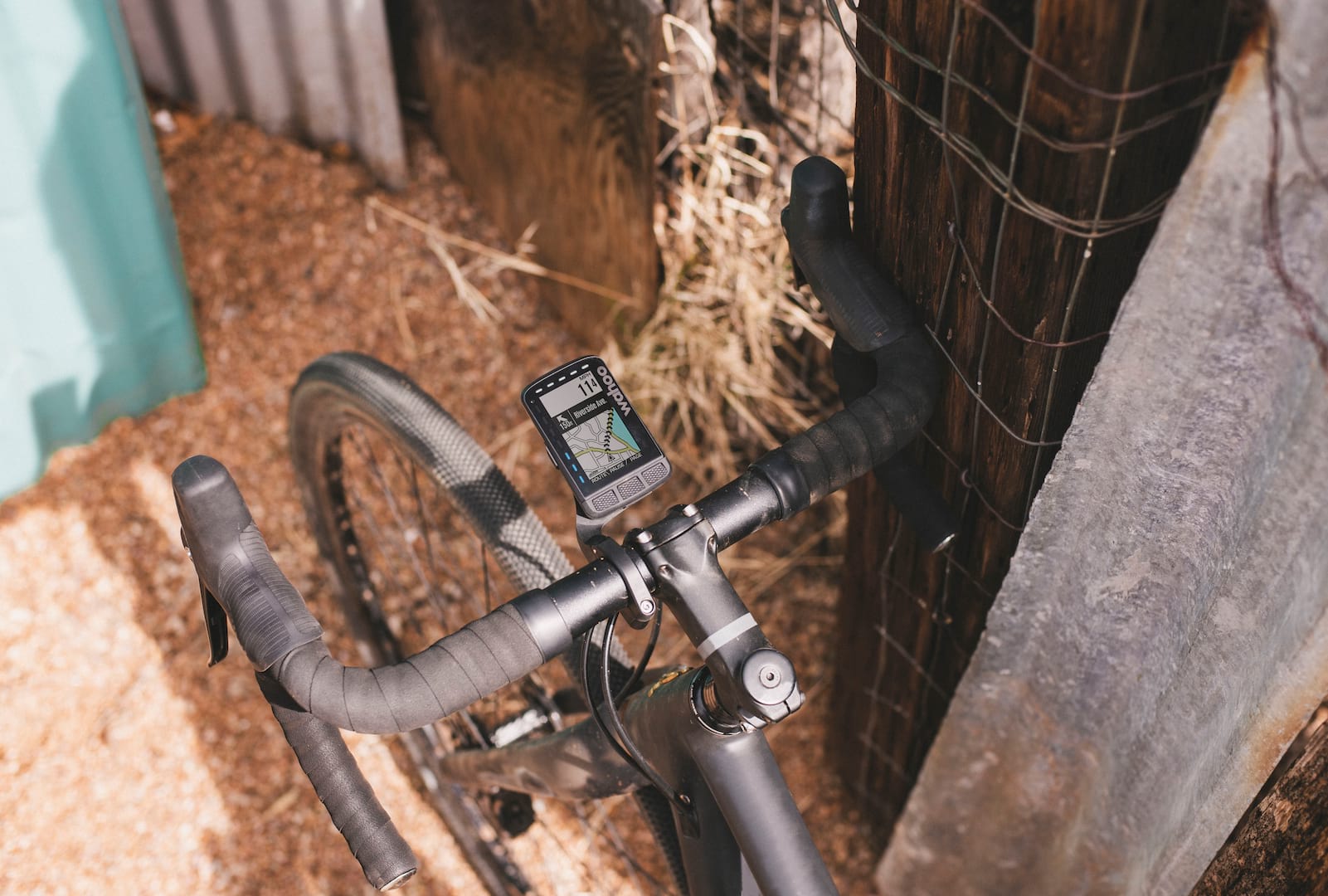
More and more features are being added to tempt mountain bikers into the market. Garmin has added a host of new features aimed at mountain bikers in their new Edge 530 and 830m with their MTB dynamics which, with the aid of an internal accelerometer, tracks metrics of how rad your jumps are, the ride’s difficulty, how smooth you ride and scores them so you can improve next time you’re hitting those particular trails. At the moment Wahoo doesn’t include any MTB specific features like this.
The Roam costs £299.99 at launch and sits between the price of the Edge 530 at £259.99 and the Edge 830 at £349.99. Wahoo has always been very quick to add new features and enhancements to their devices after release with software updates so I expect more features and refinements to come on the Roam. It’s a moving market, Wahoo have brought us models with user friendly features and reliability that owners love and now with the competition hotting up between manufacturers, that can only be a good thing.
Specifications
- Size 2.3 x 3.5 x 0.7 in. // 58.4 x 89 x 17.8 mm
- Weight 3.3 oz. // 93.5 grams
- Screen size 2.7 in. // 68.58 mm
- Battery life 17 hours
Price
- USD $379.99
- EURO €349.99
- CAD $499.99
- GBP £299.99
- AUD $599.95
- JPN ¥46,000
Disclosure
Rob’s travel and accommodation were provided by Wahoo.






“Navigation in many circumstances isn’t required as many an MTB rider will often be on well known local trails or at a trail centre”
If you get a unit to test please give it to someone that understands off road navigation is an important function of a device like this. If I only want tracking I will use a cheaper device.
As above – navigation is the only reason I use a GPS on my mtb. Not interested in Garmins new ‘mtb features’ – just give us decent base maps, proper off road navigation and decent battery life. So much utter c*** on these – please can we have a god designed for trail riding? Somebody????
@Rubber_Buccaneer Thanks for your comment. Totally understand many riders want off road navigation which is what i think GPS bike computer manufacturers are now trying to achieve to get more traction in the off road market with their new units. I personally ride with one on any bike I’m out on and load up pre planned rides when i’m out on the MTB. But my point was that, for various reasons, there are a less riders using them for MTB than on the road so it is a harder market as a whole to crack.
Have used a twonav anima for several years now https://www.twonav.com/en/gps
Have bought ord survey maps for it and and load either internet routes or plot my own using their Land programme. Then it’s just follow the green line. Screen would benefit from being a little larger and it can be a bit clunky but it’s handy having a 3d OS map or Street Map on your handlebars
“there are a less riders using them for MTB than on the road so it is a harder market as a whole to crack.”
Perhaps because none offer cheap and reliable off-road mapping? Basic unit allowing you to follow routes on OS maps (or similar) and basic metrics such as distance, altitude etc, with decent battery life (or batteries like the etrex series) = lots of sales?
Clink. Try the twonav website. No I’m not a salesman I just quite like the Anima I bought 5yrs ago Does all the stuff you mention and battery lasts a decent all dayer -Not had to use the spare battery yet. Expect they have made some improvements since I got mine also.
For offroad navigation, I use Gaia GPS with routes loaded on my iPhone, mounted on the bars with a quad lock. The phone stays on, Gaia showing me my current position. That works pretty well, only issue I’ve found is if its a very long ride, having the phone screen on and GPS tracking doesn’t;t last more than 5-6hrs.
twonav gps units look good. All I want to do is follow some bridleways, how hard can it be! Are the touch screens better than the garmin ones ? (820 is awful!)
nickd23 the touchscreen on my 5yr old twonav is both twitchy and a bit clunky. I don’t mind it. The clunkiness may be improved in the current versions
I use the Wahoo Element for off road and gravel in conjunction with Komoot. That gives turn by turn navigation and a nice clear display with enough battery for an all dayer (even in the height of summer). A quick boost from a battery pack at coffee stops is easy to do anyway. Been very very pleased with it and may consider upgrading to this fancy colour screen one when it’s had a few updates.
Surely, a cheapy android phone will do all this & more…….. mine does.
If they’re targeting mtb , does that mean they will finally release an out front mount for 35mm bars? I’ve got the Bolt, but can’t mount it on the stem as it’s too short and no bar mount options